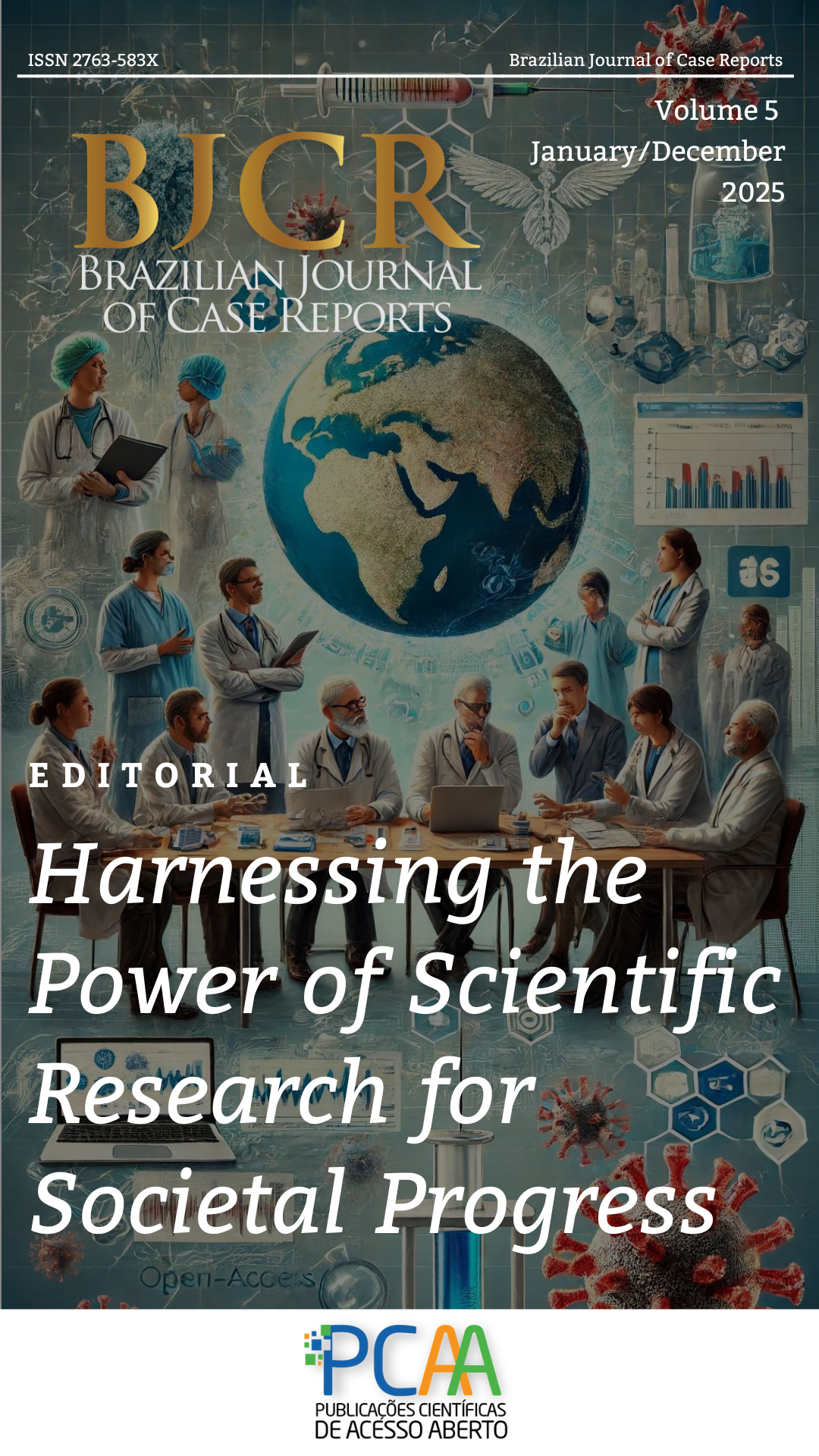Neuropsychological Profile in Hutchinson-Gilford Syndrome: Analysis of a Rare Case
Main Article Content
Abstract
Hutchinson-Gilford Syndrome, also known as Progeria Syndrome, is a rare genetic disorder that leads to premature aging and accelerates the cellular aging process, affecting the cognitive, motor, and social functions of affected children. This study presents the neuropsychological assessment of two 3-year-old patients diagnosed with the syndrome, aiming to map their cognitive, emotional, and behavioral profiles. The evaluation included interviews with family members, clinical observation, and the application of tests such as the Bayley-III Scale and the Son-R Test. The results indicated significant delays in cognitive, motor, and communicative abilities in both patients, with developmental ages below their respective chronological ages. Based on these findings, a multidisciplinary approach involving speech therapy, occupational therapy, and physical therapy is recommended to stimulate the affected areas and develop family support strategies to promote better social and functional adaptation.
Article Details

This work is licensed under a Creative Commons Attribution 4.0 International License.
Authors retain the copyright of their articles and grant the journal the right of first publication under the Creative Commons Attribution (CC BY) license, which allows others to share and adapt the work with proper attribution.
References
Progeria Research Foundation. Quick facts: Progéria – Fatos rápidos – PRF em números [Internet]. 2024 [cited 2025 Feb 4]. Available from: https://www.progeriaresearch.org/quick-facts/
Lima LL de, et al. Você conhece esta síndrome? An Bras Dermatol. 2011;86(1):165–6. doi:10.xxxx/abcd.
Alberto L, Palacios-Rosas E. Síndrome de Progeria Hutchinson-Gilford. Multimed. 2022;26(5).
Merideth RE, Gordon LB, Crawford TO, Damon LK, Barnett CP, Neuhaus IM, et al. Progeria: A clinical study and its genetic link. Pediatr Cardiol. 2008;22(3):305–11.
Gordon LB, Breslow N, Kim J, Li H, Sirbu C, Hemphill M, et al. Progeria and lamina A/C mutation: Review of clinical features and treatment. Pediatr Res. 2014;75(1):55–62. doi:10.xxxx/abcd.
Silva LC de A, et al. Síndrome de Hutchinson-Gilford e suas principais alterações. Cad Publicações Univag. 2021;11.
Alves GS, Perroco TR, Sudo FK. Psicogeriatria: Diagnóstico e Manejo. Porto Alegre: Artmed Editora; 2022.
Ullrich NJ, Kieran MW, Miller DT, Gordon LB, Cho YJ, Silvera VM, et al. Neurologic features of Hutchinson-Gilford progeria syndrome after lonafarnib treatment. Neurology. 2013;81(5):427–30. doi:10.1212/WNL.0b013e31829d85c0.
Drago R. Síndromes: Conhecer, planejar e incluir. Rio de Janeiro: Wak; 2024.
Moreira NS, Soares GG. Aplicação do reforço positivo na ecolalia para o desenvolvimento da linguagem em crianças com transtorno do espectro autista. Semana Pedagogia. 2024;258–63. Available from: http://anais2.uesb.br/index.php/seped/article/view/2430.
Wang J, Yu Q, Ma X, Yuan Z, Mao J. Hutchinson-Gilford progeria syndrome complicated with stroke: A report of 2 cases and literature review. Front Pediatr. 2022;10:1056225. doi:10.3389/fped.2022.1056225.
Guardiani E, Zalewski C, Brewer C, Merideth M, Introne W, Smith AC, et al. Otologic and audiologic manifestations of Hutchinson-Gilford progeria syndrome. Laryngoscope. 2011;121(10):2250–5. doi:10.1002/lary.22151.
Progeria Research Foundation, Inc. Manual sobre Progéria: Um guia para famílias e profissionais de saúde que assistem crianças com Progéria. 2nd ed. Peabody (MA): Progeria Research Foundation, Inc.; 2019 [cited 2025 Feb 4]. Available from: https://www.progeriaresearch.org/patient-care-and-handbook
Malloy J, Berry E, Correia A, Fragala-Pinkham M, Coucci S, Riley S, et al. Baseline range of motion, strength, motor function, and participation in youth with Hutchinson-Gilford progeria syndrome. Phys Occup Ther Pediatr. 2023;43(4):482–501. doi:10.1080/01942638.2022.2158054.
Kreienkamp R, Gonzalo S. Metabolic dysfunction in Hutchinson-Gilford progeria syndrome. Cells. 2020;9(2):395. doi:10.3390/cells9020395.
Leite HR, Camargos ACR, Gonçalves RV. Intervenções para crianças e adolescentes com paralisia cerebral: Raciocínio clínico para tomada de decisão baseada em evidência. São Paulo: Medbook; 2023.
